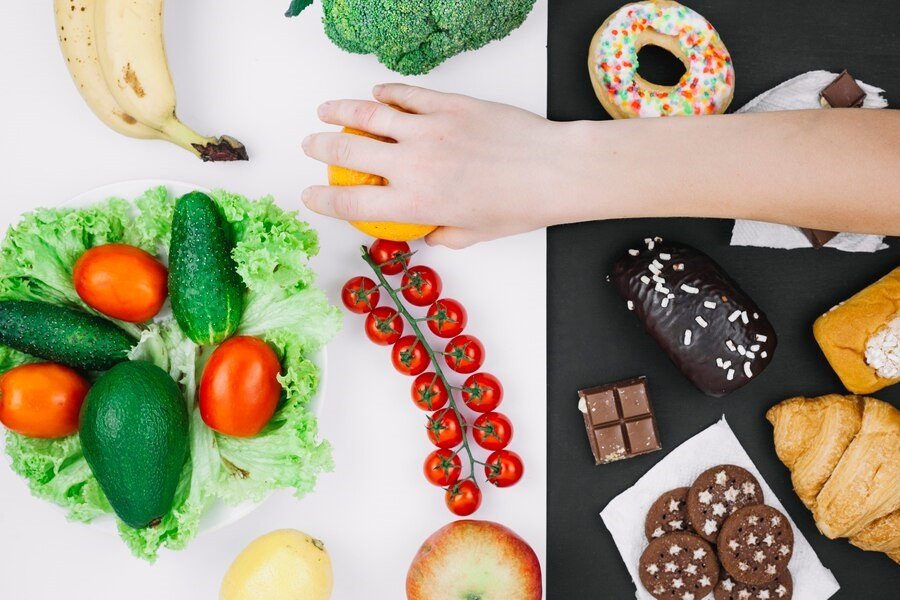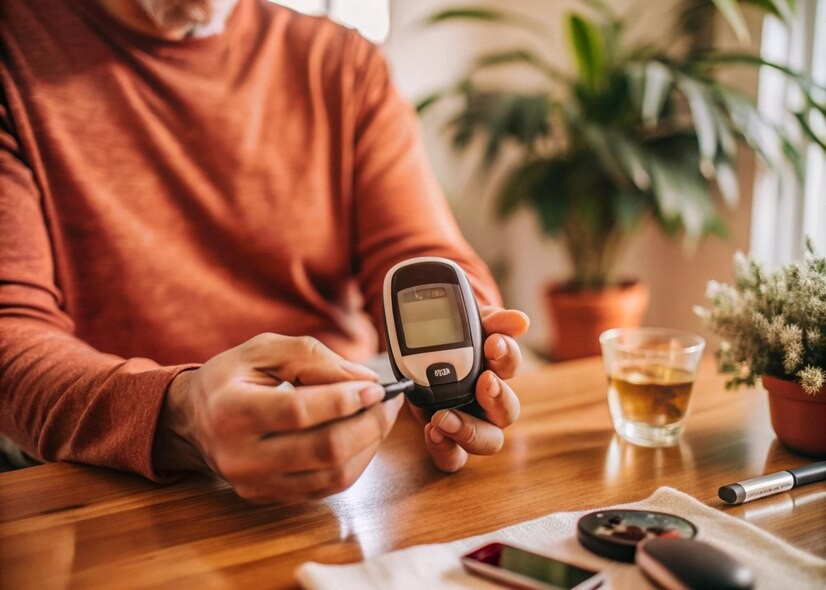Diabetes develops when the body doesn't produce enough insulin or becomes resistant to insulin. Insulin hormones play a vital role in regulating blood sugar levels. When insulin production is insufficient or body cells fail to respond to insulin, it results in elevated blood glucose levels.
Various long-term consequences can result from uncontrolled diabetes, such as heart disease, gum disease, dental infections, nerve damage, eye disorders, kidney disease, vascular damage in the legs, and others. However, diabetes can be managed by following a healthy diet, regular exercise, and taking medication as prescribed.
Exploring Healthy Eating Patterns for Diabetics
Maintaining good dietary habits is crucial for individuals with diabetes, regardless of whether they have type 1 or type 2. For people with type 1 diabetes, proper insulin management and daily carbohydrate counting are necessary to keep blood sugar levels stable. Those living with type 2 diabetes can improve glucose regulation and reduce the risk of complications by maintaining a healthy weight. You can achieve weight loss through a calorie deficit, exercising, and selecting nutritious foods.
Here are some recommendations for achieving a balanced diet:
Selecting the right type of carbohydrates for a healthy diet.
Carbohydrates are traditionally categorised as "simple" or "complex." Foods that are rich in complex carbs usually contain a variety of nutrients, such as vitamins, minerals, and fiber due to their more complex chemical structure. Complex carbs take longer to digest, thus preventing a rapid increase in blood sugar levels. However, white bread is an example of a complex carb food that is mostly starch and contains fewer nutrients.
Nowadays, people who have diabetes take into account the glycemic index when selecting their food. The glycemic index indicates how fast and how much carbohydrates increase blood sugar levels after a meal. Foods like white bread, due to their high glycemic index and quick digestion, can quickly raise blood sugar levels. On the other hand, foods with a low glycemic index, like oats, are digested slowly, resulting in a gradual increase in blood sugar levels.
The glycemic index (GI) of a food is determined based on how much it raises blood sugar levels. A low GI food has a value of 55 or lower, while a moderate-GI food has a value of between 56 and 69. In order to prevent a rapid increase in blood sugar, it is important to choose foods that have a low GI and complex carbohydrates that contain a significant amount of fiber. You should also look for foods abundant in other nutrients, such as vitamins, minerals, and antioxidants.
Complex carbohydrates can be obtained from various sources, including grains, green leafy vegetables, nuts, onions, fruits, and yoghurt that do not contain any artificial sweeteners, bread, and cereals made with whole wheat. Reducing the consumption of foods high in carbohydrates and low in fibre, such as white bread and white rice, is an important step.
Reduced salt intake
People with diabetes have a higher risk of heart disease, but reducing salt intake can lower the risk and protect heart health. A high-salt diet is associated with high blood pressure. Many processed and packaged foods contain a lot of salt. You should routinely check packaged food labels for nutritional and salt content.
Limit your salt intake to 6 grams (one teaspoon) a day. Avoid excess salt intake by eating home-cooked meals or following a clean diet (reducing consumption of processed foods, whole of synthetic ingredients and eating foods as close to their natural state as possible). Cooking for yourself will help you know how much salt you are consuming.
Reduced intake of red meat and processed meat
Reducing the consumption of red meat and processed meats, such as ham or sausages, has been shown to lower the risk of developing cardiovascular disease and certain types of cancer. This is because red meat contains a high amount of saturated fat, which increases the risk of heart disease and high cholesterol. It is particularly important for individuals with diabetes to be cautious about their intake of red meat.
Replace red meat and processed meat with eggs, fish, unsalted nuts, or chicken. Choosing plant-based proteins such as legumes, which have a lower glycemic index than meat, helps manage blood sugar levels, which is important for diabetics.
Read More: How Much Red Meat Can Be Consumed Every Day?
Eat More Fruits and Veggies
Vegetables and fruits are excellent sources of fiber, which is an important nutrient for maintaining digestive health. Additionally, fiber helps regulate blood sugar levels and keeps you feeling full for longer periods of time compared to other types of food.
Fruits and vegetables are rich in vitamins, minerals, and antioxidants that help protect cells from damage caused by free radicals. Eating fruits as a snack can help reduce the consumption of other sweetened foods with added sugar.
Choosing healthy fats
Not all dietary fats need to be avoided since they provide energy. However, diabetics should opt for healthier fats to reduce the risk of health issues.
Here are some healthy fats to choose from:
- Omega-3 fats, e.g. Salmon, sardines, and eggs
- Monounsaturated fats, e.g. Olive oil, avocados, and nuts
- Multiple unsaturated fats, e.g. sunflower oil, soybean oil, and canola oil
Avoid trans fats and saturated fats like red meat, high-fat dairy products, processed foods, biscuits, margarine, and fried foods
Read more: Types Of Food Fats, Know Which Are Good And Not
It's not just about eating a healthy diet, regular physical activity is also crucial. Aim to exercise for at least 150 minutes every week. Consistent exercise can assist in controlling your blood sugar levels. Before starting any physical activity, make sure to consult with your physician to ensure it is safe for you to do so based on your current health condition.
You can access our health consultation services by downloading the Ai Care app from the App Store or Play Store.
Want to know more information about nutrition, food and other diet tips? Click here!
- dr Hanifa Rahma
Diabetes.org.UK. 10 Tips For Healthy Eating With Diabetes. Available from: https://www.diabetes.org.uk/guide-to-diabetes/enjoy-food/eating-with-diabetes/10-ways-to-eat-well-with-diabetes
Cleveland Clinic (2023). Diabetes. Available from: https://my.clevelandclinic.org/health/diseases/7104-diabetes
Diabetes.org.UK. I Have Type 1 Diabetes - What Can I eat?. Available from: https://www.diabetes.org.uk/guide-to-diabetes/enjoy-food/eating-with-diabetes/i-have-type-1-diabetes
Lauren Panoff, MPH, RD (2022). What to Eat and What to Avoid With Type 2 Diabetes. Available from: https://www.verywellhealth.com/type-2-diabetes-food-6744460
Harvard. T.H Chan. Carbohydrates and Blood Sugar. Available from: https://www.hsph.harvard.edu/nutritionsource/carbohydrates/carbohydrates-and-blood-sugar/
Jenna Fletcher (2021). Everything to know about carbs and diabetes. Available from: https://www.medicalnewstoday.com/articles/carbs-and-diabetes
Eileen Dutter, RD. Clean eating: What does that mean?. Available from: https://www.mayoclinichealthsystem.org/hometown-health/speaking-of-health/clean-eating-what-does-that-mean
American Diabetes Association. Fats. Available from: https://diabetes.org/food-nutrition/reading-food-labels/fats
CDC (2022). Diabetes. Available from: https://www.cdc.gov/diabetes/managing/active.html












